travel
China Elevator Stories
Guandi Temple and Red Gate palace at Taishan Mountain, Tai'an (China Travel)
The Red Gate area is one of the entrances to Mount Tai.
25/09/2025

Ruth Silbermayr
Author
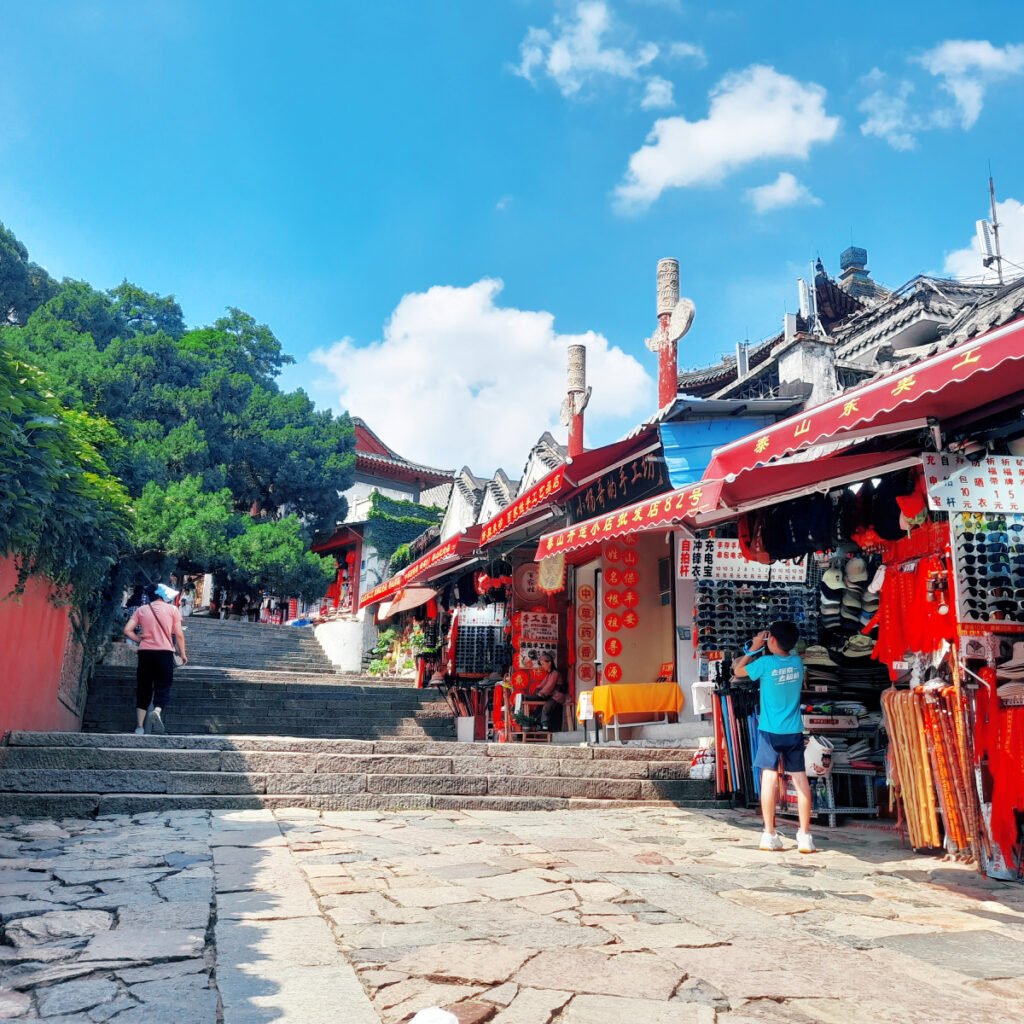
The Red Gate is one of the starting points for hiking up Mount Tai (泰山, also known as Taishan Mountain). It serves as one of the main entrances to the mountain and is where many people begin their ascent along the central route—a climb of 6,600 stone steps (about 7.5 km) to the summit.
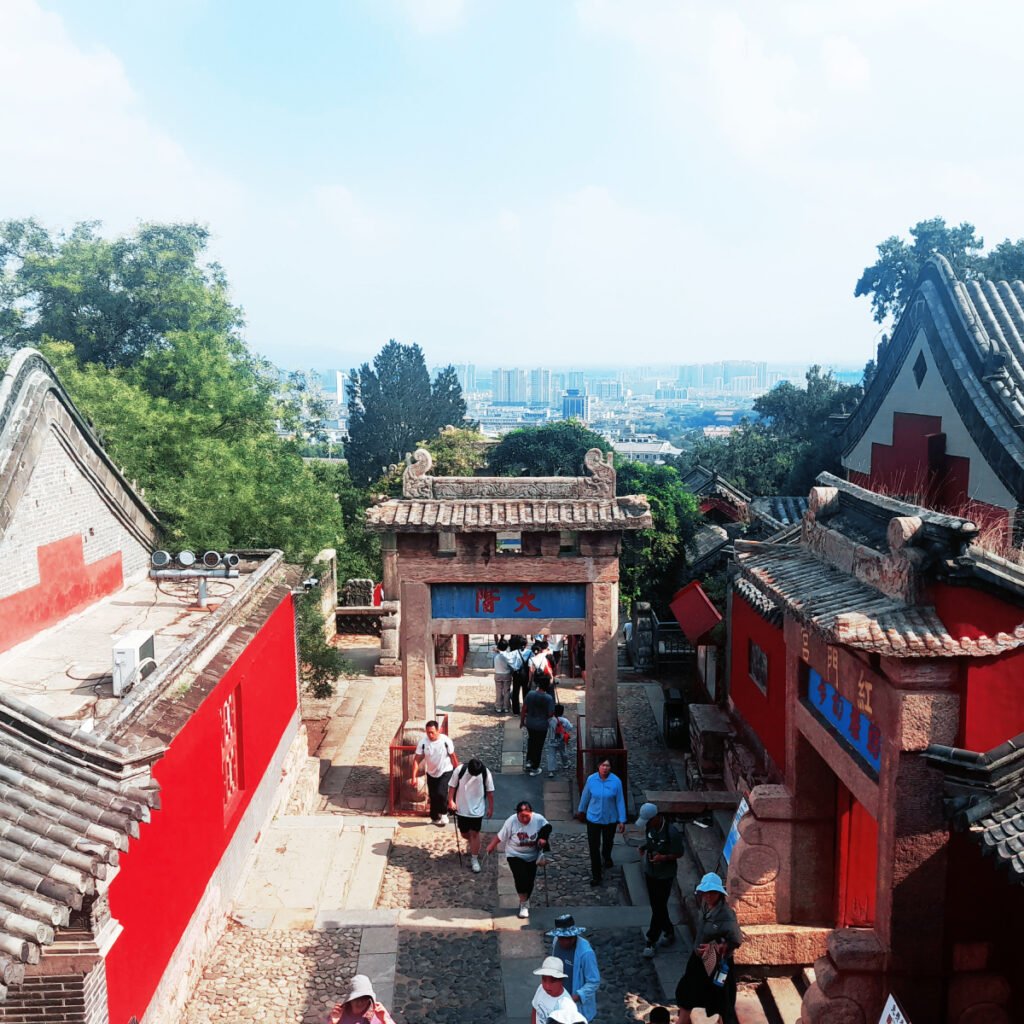
Summers in Tai’an can be extremely hot, so I recommend climbing Mount Tai in cooler seasons such as spring or autumn. Winter is not ideal, as the steps become slippery with snow, and in some places there are no railings to hold onto.
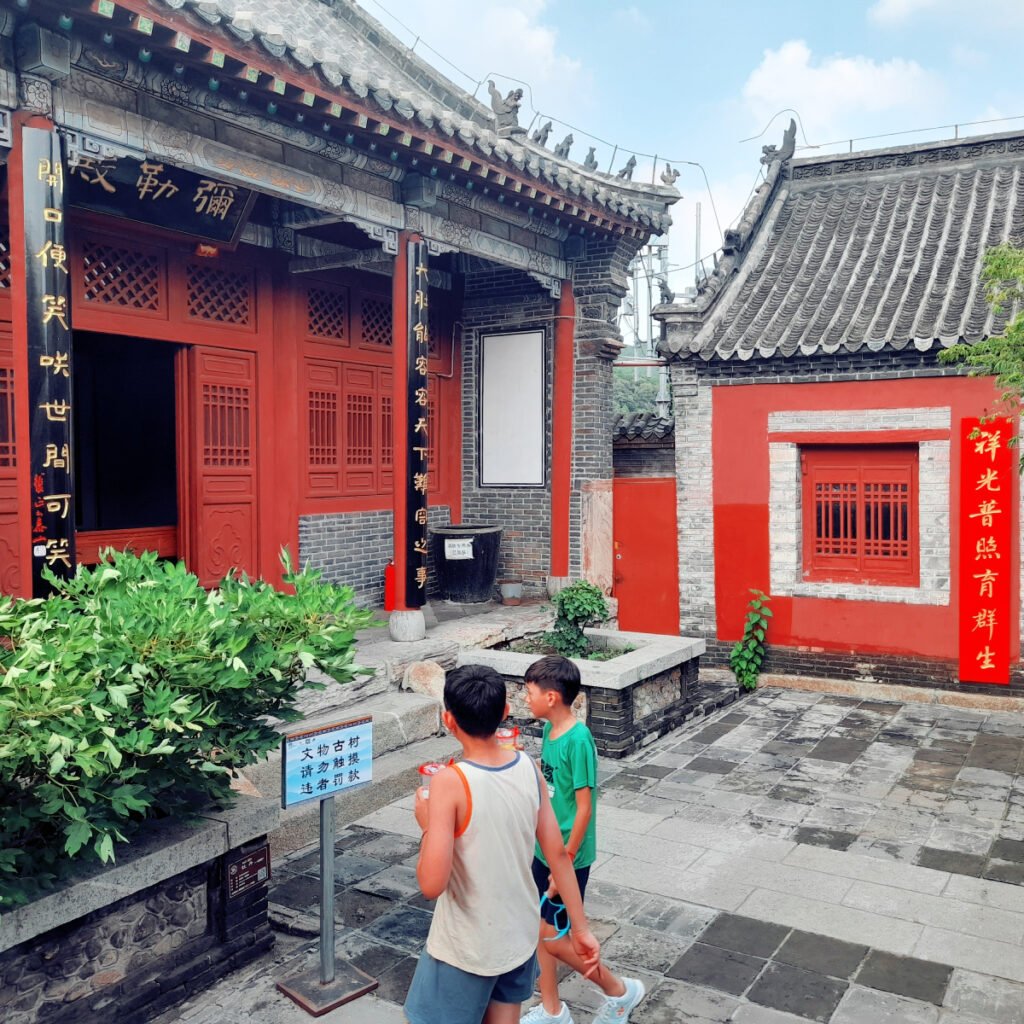
The Red Gate area (红门) itself is worth visiting in any season, including summer, as it features several temples at the foot of the mountain (which were free of charge at the time I visited).

I chose not to take my children up the mountain, but since they enjoy visiting old temples and browsing souvenir shops, we spent a day in July 2025 exploring the Red Gate area and visited two temples.
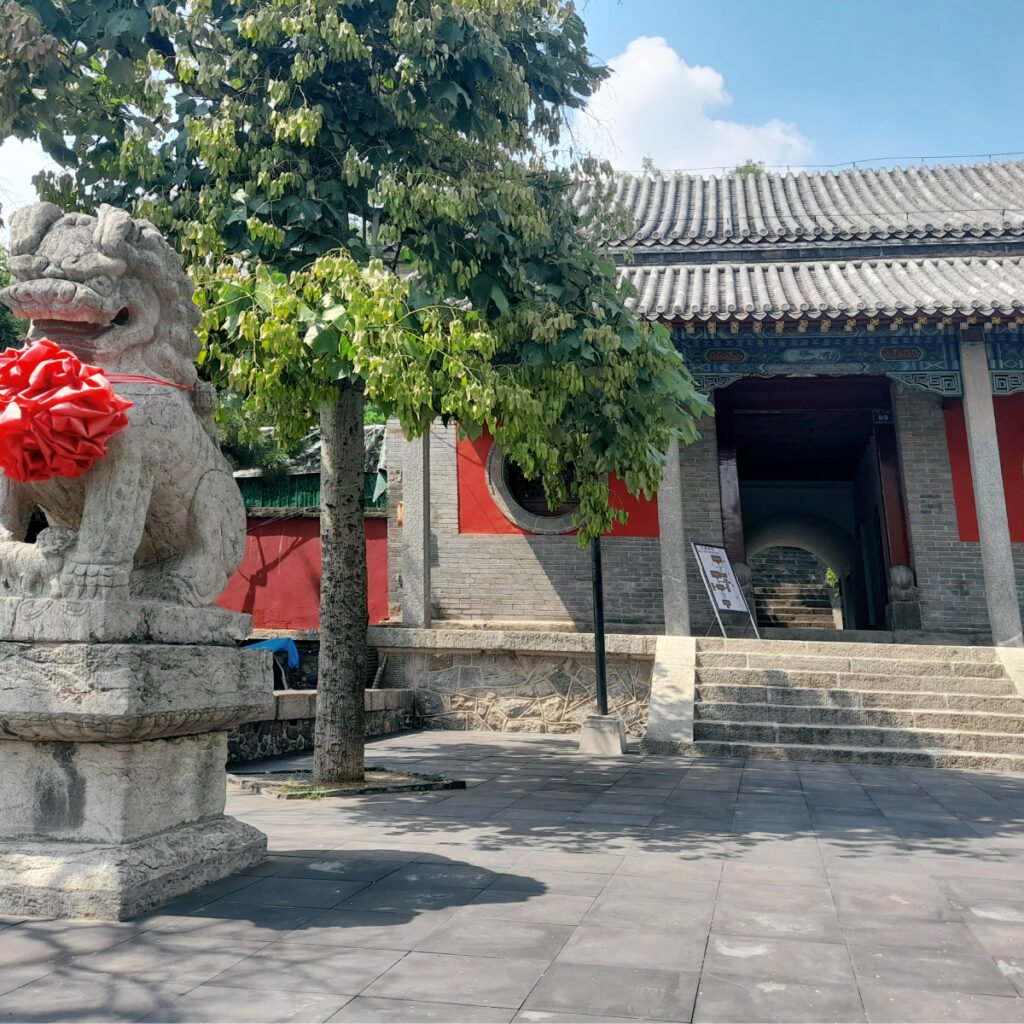
We first went to the Guandi Temple (关帝庙) and then climbed a short distance to Red Gate Palace (红门宫), both of which are located at the foot of Mount Tai. While you do need to climb a few stairs, these sites are not far from this entrance.
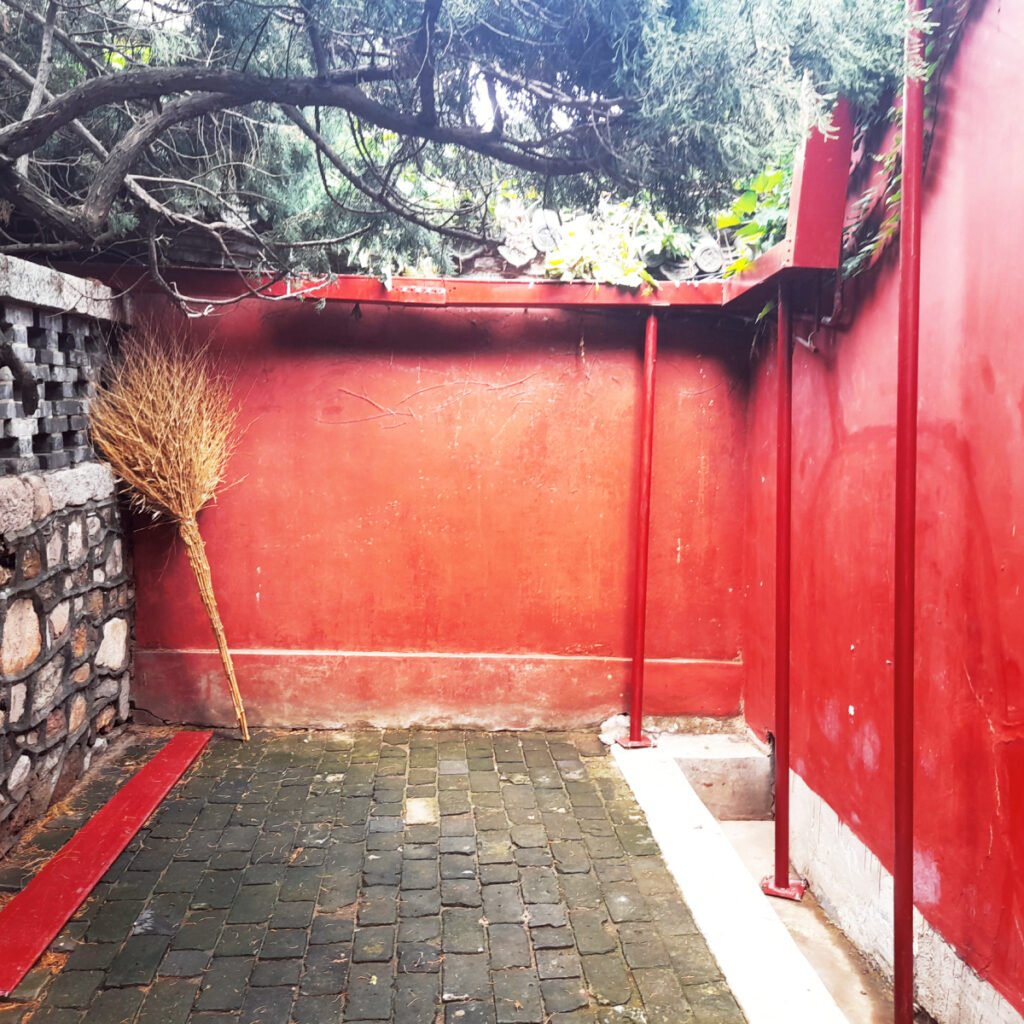
The Guandi Temple was built during the Ming Dynasty (1368–1644), though the exact date is unknown. It is dedicated to Guan Yu, a skilled military general who joined the army of Liu Bei in 184. Liu Bei later became the founder of the Shu State during the Three Kingdoms Period (220–280), one of the most famous eras in Chinese history, when China was divided into three rival states: Wei, Shu, and Wu. Guan Yu was known for his military talent, loyalty, and integrity. After his death, he was deified and came to be worshiped as Guan Gong (Lord Guan), a god of war and wealth, and a protector of the innocent.
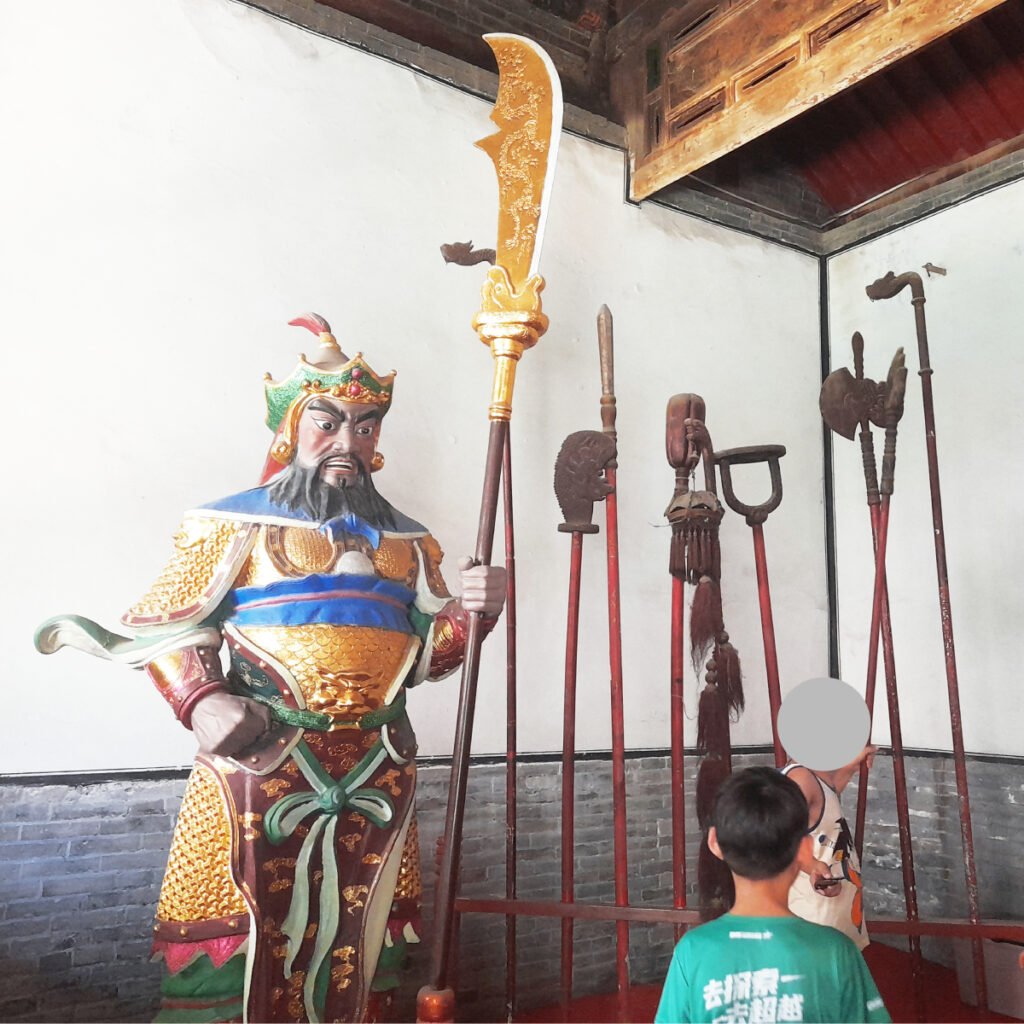
The temple also features the Dragon and Phoenix Chinese Scholartrees, said to have been planted by Emperor Gaozong (628–683) and Empress Wu Zetian (625–705) during their visit to Mount Tai to pay homage to the sacred mountain. Emperor Gaozong was the third emperor of the Tang Dynasty (618–907), and many Chinese emperors are believed to have ascended Mount Tai to show reverence to Heaven, as it is one of China’s Five Great Mountains.
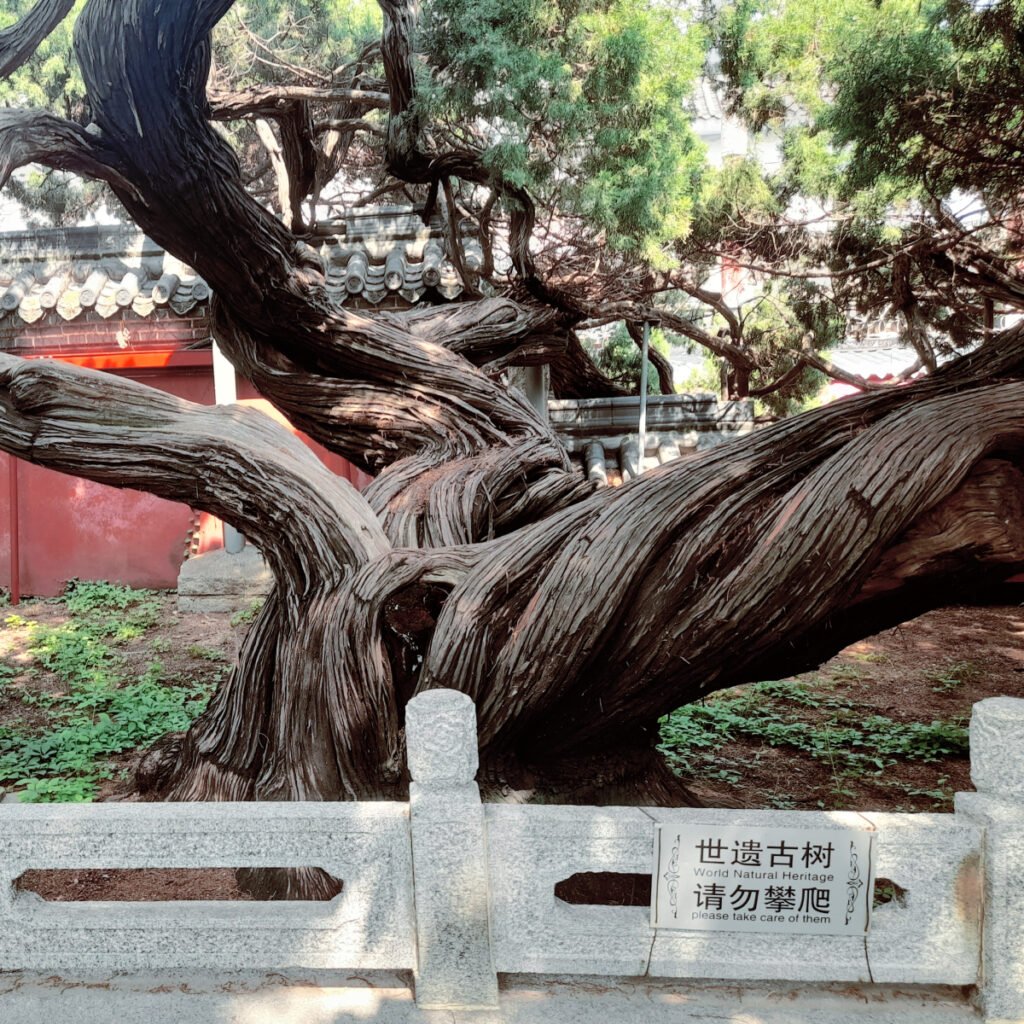
Other highlights of Guandi Temple include a courtyard, several halls, a performance stage built in 1671 during the Kangxi reign of the Qing Dynasty (1644–1911), and the Poem Bamboo Garden, reflecting Guan Gong’s love of bamboo.
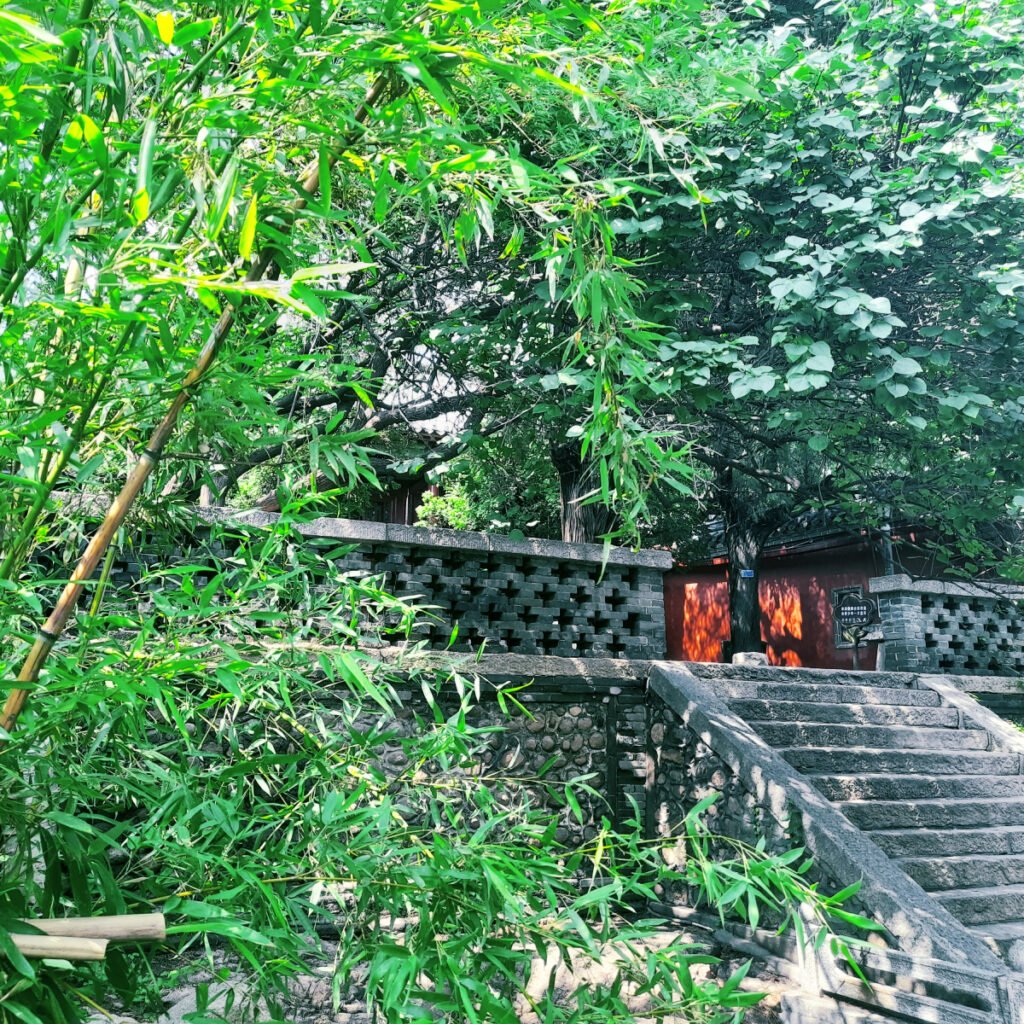
The Red Gate Palace was rebuilt in 1626 during the Ming Dynasty, though its original construction date is also unknown. The complex is divided into east and west courtyards, which honor the Laughing Buddha and the Goddess Bixia Yuanjun. The two courtyards are connected by the “Flying Cloud Loft,” a structure spanning the road. From here, you can enjoy views of Tai’an in the distance—a particularly beautiful sight on clear, blue-sky days.
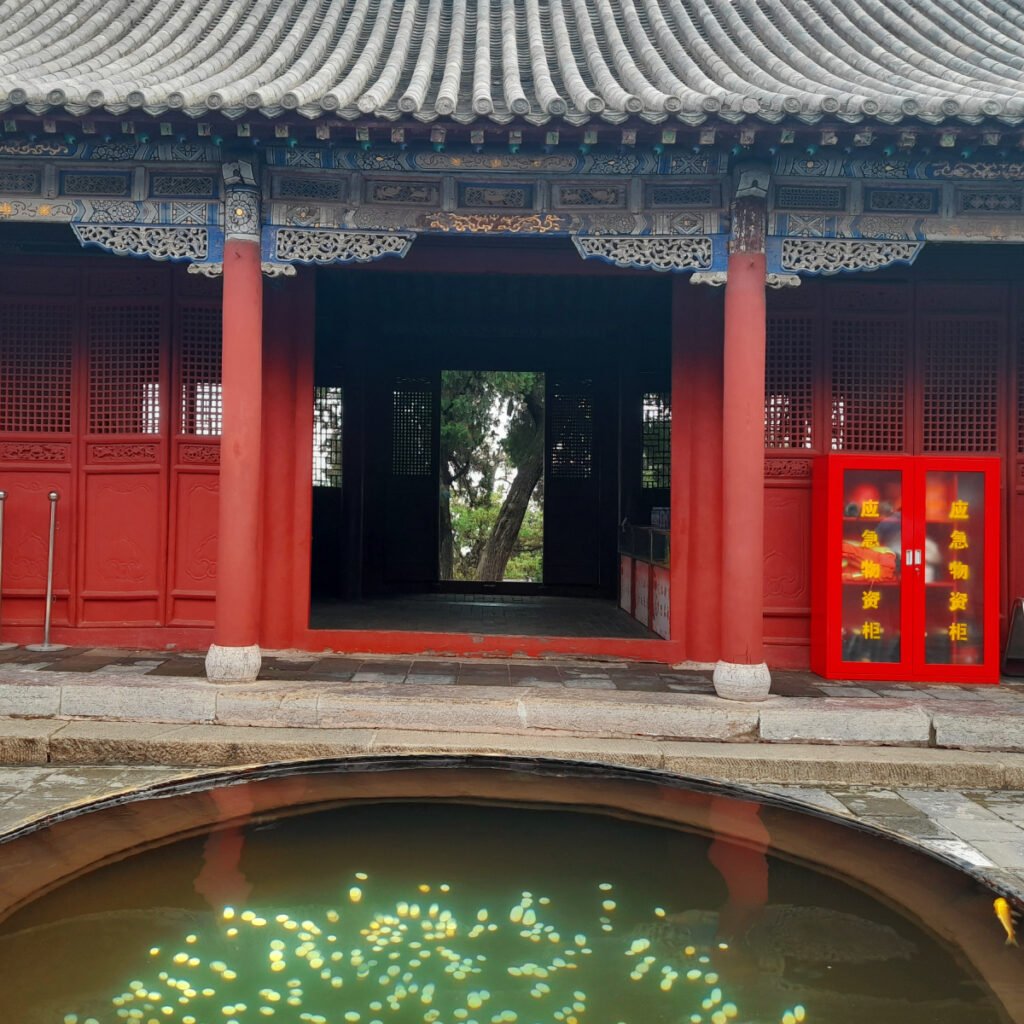
My children especially enjoyed running around the courtyards, playing with water in one of the jian (large Chinese bronze vessels), and exploring the halls dedicated to Buddhist deities. A jian is commonly found in Buddhist temples across China, and visitors often toss coins into them for good luck.
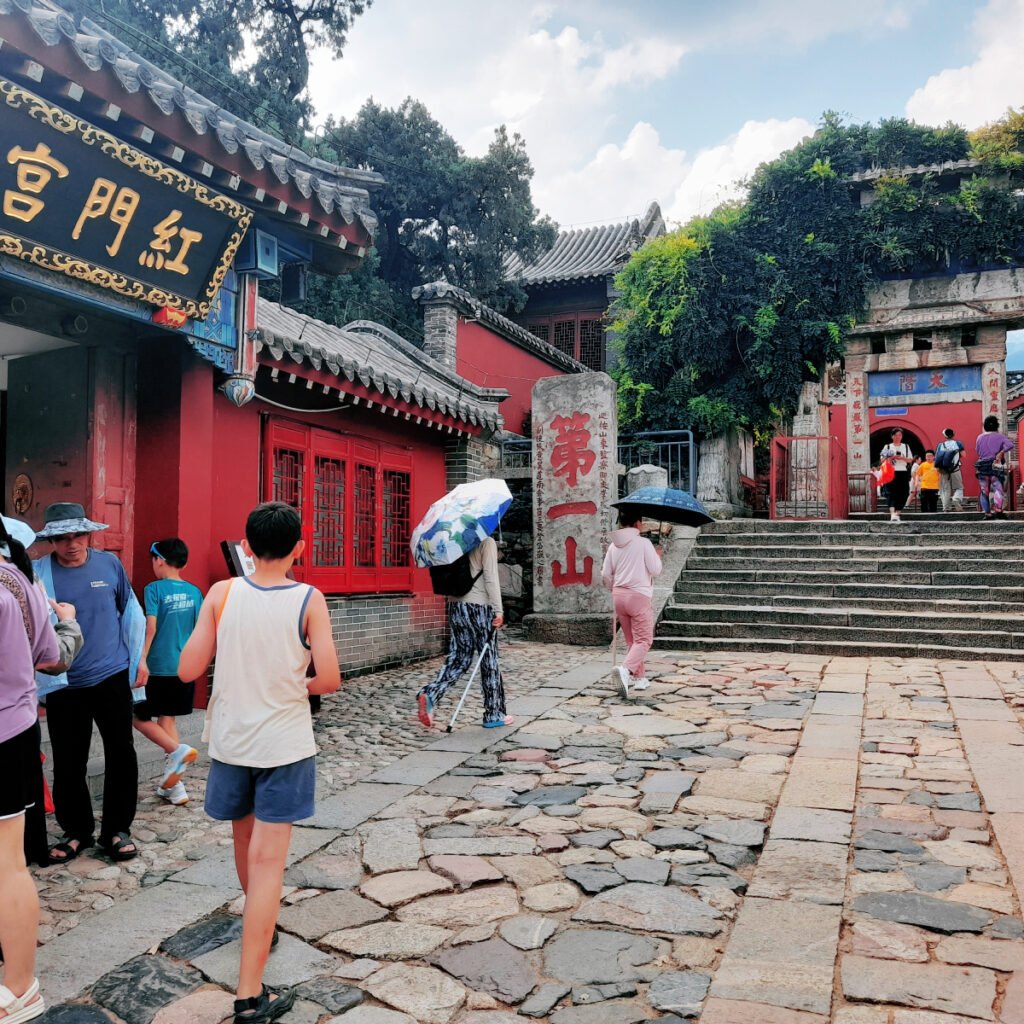
We also came across a large turtle swimming in a water channel beneath our feet in a smaller courtyard nearby. Turtles are often associated with temples, either living in ponds such as those at Puzhao Temple, which has many, or as statues of land turtles used in Taoist practices where people touch them and make wishes (sometimes after paying a fee). Turtles are generally regarded as symbols of longevity and good fortune.
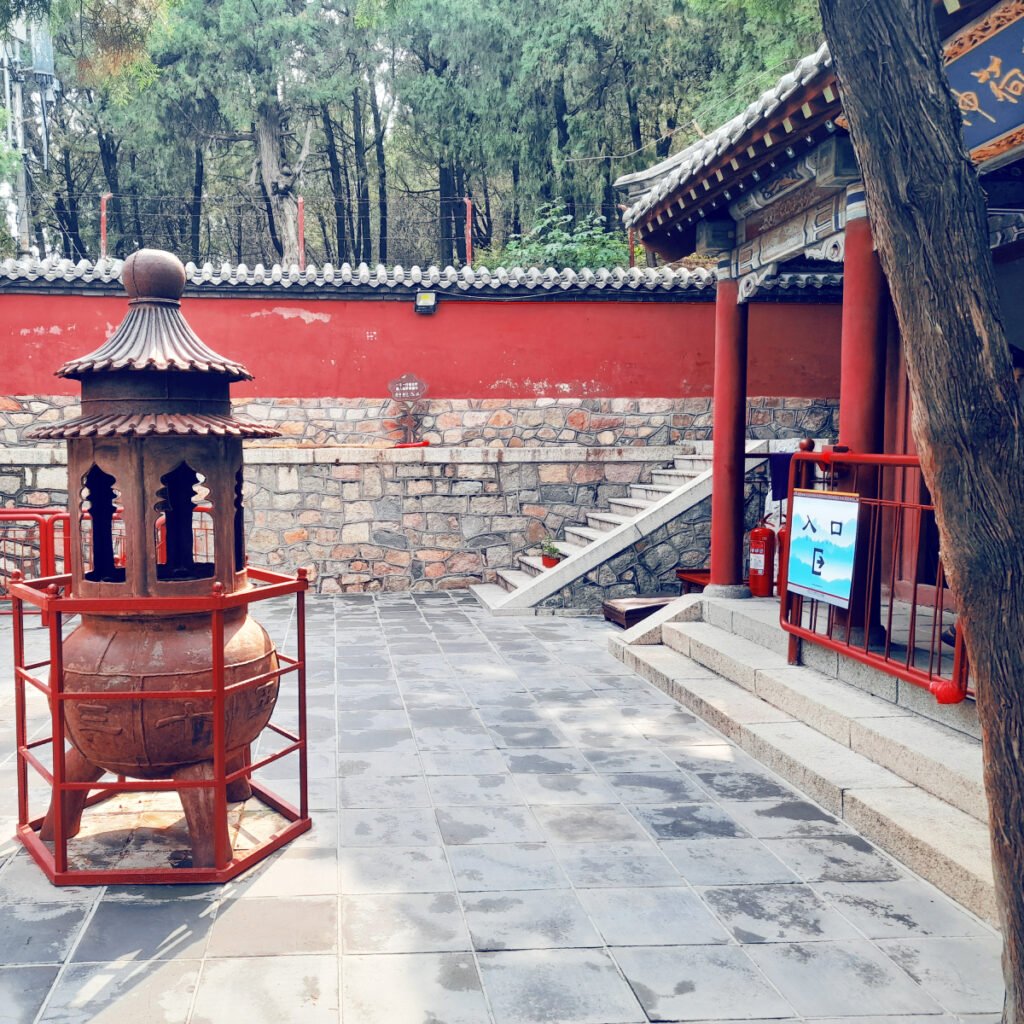
Mount Tai, which is crowded with tourists for most of the year, is also depicted on the Chinese 5 Yuan banknote, where the back shows an image of the mountain.
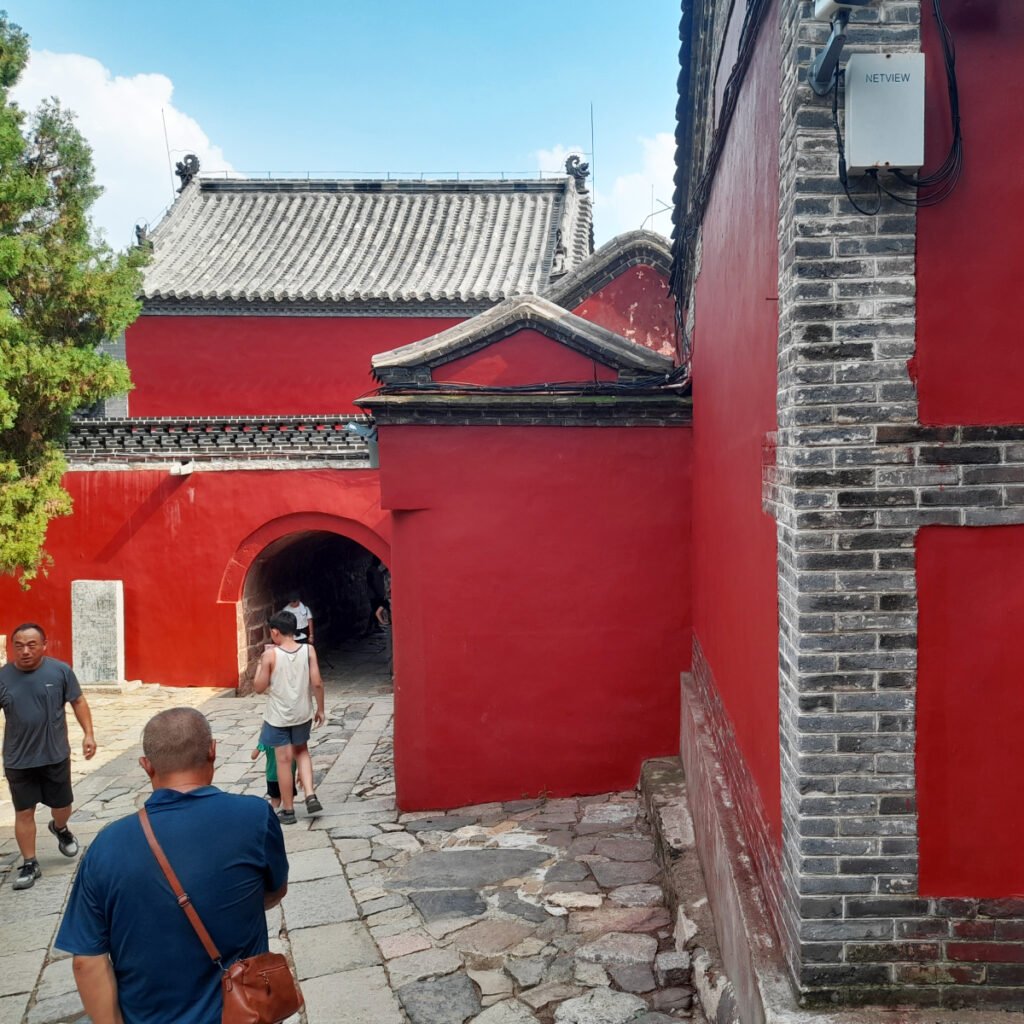
Have you ever visited the Red Gate area?